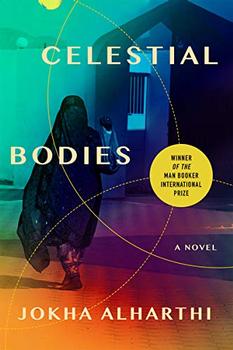Summary | Excerpt | Reading Guide | Reviews | Beyond the book | Read-Alikes | Genres & Themes | Author Bio

This rich, moving, and lyrical debut novel is to Syria what The Kite Runner was to Afghanistan; the story of two girls living eight hundred years apart - a modern-day Syrian refugee seeking safety and a medieval adventurer apprenticed to a legendary mapmaker - places today's headlines in the sweep of history, where the pain of exile and the triumph of courage echo again and again.
It is the summer of 2011, and Nour has just lost her father to cancer. Her mother, a cartographer who creates unusual, hand-painted maps, decides to move Nour and her sisters from New York City back to Syria to be closer to their family. But the country Nour's mother once knew is changing, and it isn't long before protests and shelling threaten their quiet Homs neighborhood. When a shell destroys Nour's house and almost takes her life, she and her family are forced to choose: stay and risk more violence or flee as refugees across seven countries of the Middle East and North Africa in search of safety. As their journey becomes more and more challenging, Nour's idea of home becomes a dream she struggles to remember and a hope she cannot live without.
More than eight hundred years earlier, Rawiya, sixteen and a widow's daughter, knows she must do something to help her impoverished mother. Restless and longing to see the world, she leaves home to seek her fortune. Disguising herself as a boy named Rami, she becomes an apprentice to al-Idrisi, who has been commissioned by King Roger II of Sicily to create a map of the world. In his employ, Rawiya embarks on an epic journey across the Middle East and the north of Africa where she encounters ferocious mythical beasts, epic battles, and real historical figures.
A deep immersion into the richly varied cultures of the Middle East and North Africa, The Map of Salt and Stars follows the journeys of Nour and Rawiya as they travel along identical paths across the region eight hundred years apart, braving the unknown beside their companions as they are pulled by the promise of reaching home at last.
The novel is filled with effortlessly stunning passages ... a true feat of writing. The most important aspect of the novel, however, is its treatment of history. Though it touches on myth and magic, many of the historical characters like Al-Idrisi are real and an integral part of, not only world history, but Nour's cultural sense of self. The major message of The Map of Salt and Stars is that the destruction of a homeland threatens to destroy history, but that history can never die as long as people, like Nour, choose to remember...continued
Full Review
 (630 words)
(630 words)
(Reviewed by Rebecca Renner).
 Mapmaking has been a vital part of human curiosity for millennia. The oldest known world map is the Babylonian Map of the World, also known as the Imago Mundi, which dates back to the 5th century BCE. This early map is not alone. Archaeologists have found many map-like representations in caves, some of which even show images of star patterns ancient people saw in the night sky. And there is the possibility of a much older extant map in the form of a wall painting found in 1961 in Turkey which is believed to be more than 8,000 years old and is generally considered to be either the earliest landscape painting or the earliest known map.
Mapmaking has been a vital part of human curiosity for millennia. The oldest known world map is the Babylonian Map of the World, also known as the Imago Mundi, which dates back to the 5th century BCE. This early map is not alone. Archaeologists have found many map-like representations in caves, some of which even show images of star patterns ancient people saw in the night sky. And there is the possibility of a much older extant map in the form of a wall painting found in 1961 in Turkey which is believed to be more than 8,000 years old and is generally considered to be either the earliest landscape painting or the earliest known map.
Maps have come a long way since then as humanity has explored the world, discovered new media for art ...

If you liked The Map of Salt and Stars, try these:

by Jokha Alharthi
Published 2019
In the village of al-Awafi in Oman, we encounter three sisters: Mayya, who marries after a heartbreak; Asma, who marries from a sense of duty; and Khawla, who chooses to refuse all offers and await a reunion with the man she loves, who has emigrated to Canada.

by Mark Oshiro
Published 2019
A story of resilience and loss, love and family, testifying to the vulnerability and strength of a community living within a system of oppression.